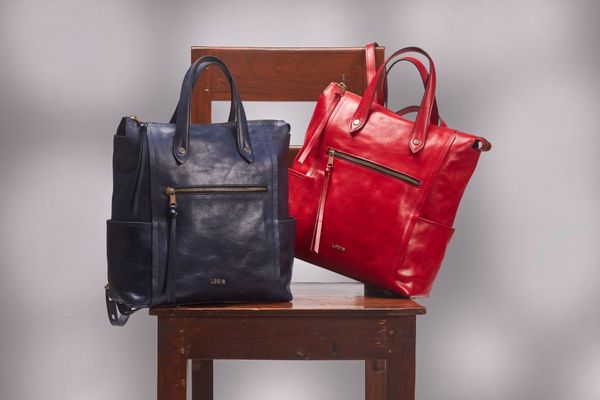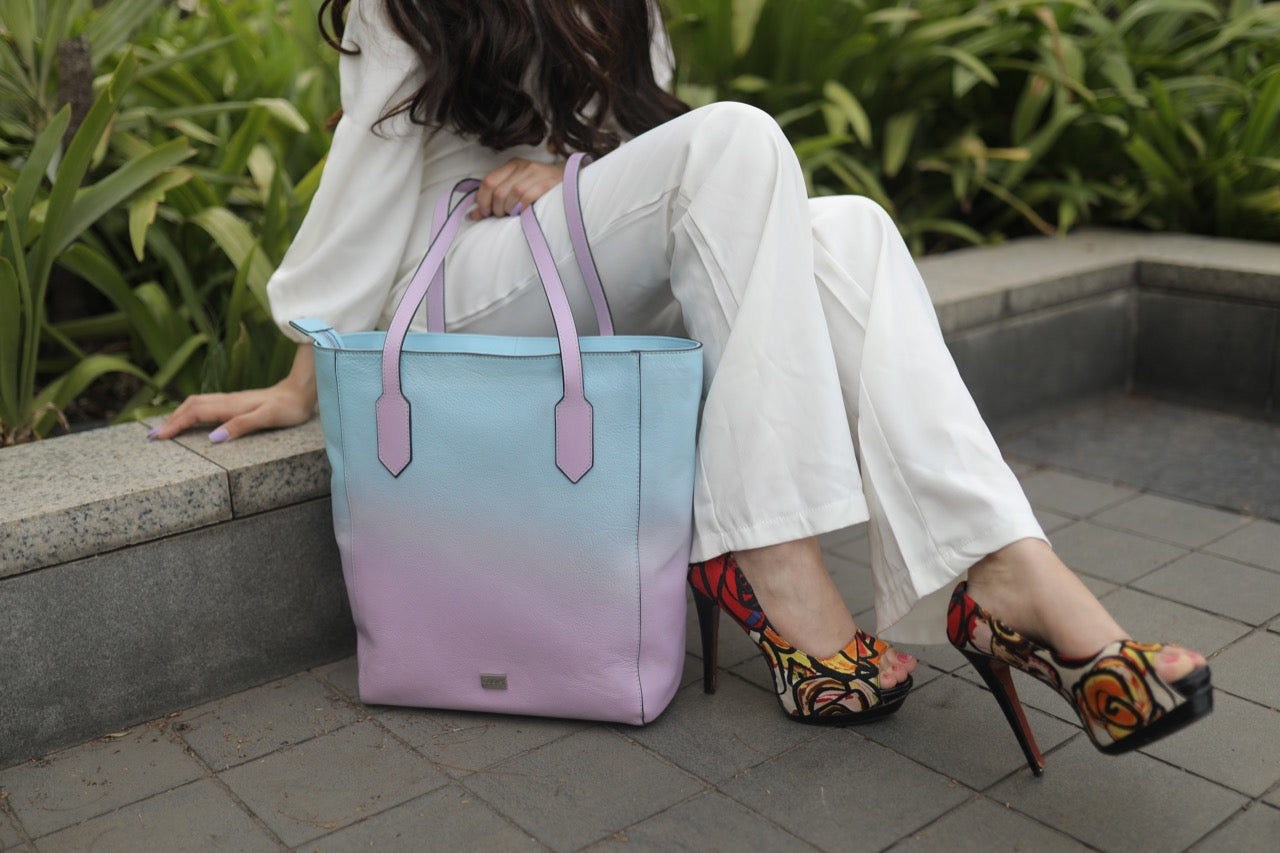
Can Leather be Ethical? Let's Discuss
When it comes to ethics, we are in subjective territory. Objectivity in terms of ethical purchase and other factors around it is surrounded by context. Hence, moral judgment is reserved. However there are elements to the do's and don'ts of purchase that maybe deserve a second look - and in some cases, a do over.
How ethical is it to buy leather in the current economy, especially with the contemporary social climate around sustainability in pop culture. As consumers, educating the means of your choices or even thinking them over is a responsibility we can longer ignore.
The leather industry has been around for centuries. For a more basic understanding of it - leather production has been a part of human civilisation since some time now. The first bag like accessory, after all, was a leather pouch. Having evolved from hunting and gathering to the current state of human kind, we no longer ensure (or even want) a direct contact with what makes leather, leather. Animals, or more specifically, the hide of an animal.
Alternatives in recent times have sprung up to give us choices, but these choices are still rife with extra expenses that cloud over the 'context' issue of purchasing.
So, let's discuss - is ethical leather an antithetical statement? If yes, why. And what can be done about it - step by step.

Where does your Leather come from?
Leather, be it cow leather, lambskin, calf, suede or otherwise is an animal product. Meaning it is direct product of the animal industry. After having received grief (from PETA, and more) about it, leather manufacturers have found solace in the fact that most leather is sourced from the byproducts, or the waste product of the meat industry. The argument around that being that sourcing from waste makes an ethically sound product. Let's take a look at the sourcing of hide.
By-product of the meat industry or Animal Cruelty?
A 1991 study by the Colorado State University states that the hide is about 6% to 8% of a cow's value. This brings the question, when bovine cattle is reared for the sole purpose of supply to the meat industry. What is to be done with the hide? Ranchers have two options, either sell it or burn it. If we were to keep aside the ethical implications in a way, of supporting the meat industry - hide for leather seems to be a matter of waste management. If leather is considered a byproduct of the meat industry - all's the wiser for it. But there is nuance to it, because like any other ethical conundrum (or an oxymoron), it is not black and white.
China is the largest supplier of leather hide worldwide, followed by Brazil, Italy, Russia and India (view source here). The supply chain politics of how hide becomes the beautiful leather bag on the shelves, is complicated and rife with controversy. Especially around animal cruelty by the ways of animal slaughter and the counter arguments around the meat and leather correlation made by most leather manufacturers.
But something else that is in a constant state of controversy in the chain of manufacturing leather is: tanning.
Tanning leather and it's implications
The pollutants of the leather tanning industry are huge contributors to land and air pollution. The environmental impact of the fashion industry (especially leather accessories) can be accounted by the following statistics: chrome tanning with chromium III and IV accounts for 85% of leather manufacturing around the world. In this 95% of shoe upper leather, 70% of leather upholstery and ~100% of leather clothing is chrome tanned.
Salts of chromium are used as natural tannins to break down leather and to make it resistant to decomposition. But the problem with chrome tanning is, in recent years chromium (and its salts, especially the chromium IV) are suggested to be carcinogenic. It leaks into the waterbed, introducing toxicity to the local soil and can be a cancer risk to the workers in the tannery.
However, a slower and painfully long alternative to this is vegetable tanning. Vegetable-tanned leather bears almost no difference to a commercially tanned one. It also makes the leather (after it has eventually ended up in the landfill - more biodegradable). What is vegetable tanning? Tannins are found in nature (like the famous grape tannin conversation for wine aficionados), and is especially in a higher concentration in tree barks, roots and leaves of certain species like birch, oak, willow and more. This natural process of tanning and the leather it produces is a favourite among high-end leather consumers. Cuts the guilt just a bit, you know.
Pleather: Vegan Leather
All this conversation about animal cruelty and the evils of leather shoes is a hark back to the peak of Veganism movement (who remembers the summer of 2016?). Vegan leather, or what is now called pleather, is non animal leather manufactured with polyurethane (PU) and/or polyvinyl chloride (PVC). So basically? Plastic. Both PU and PVC are made from petroleum industry. Hence the portmanteau pleather: plastic leather. It's fake leather, not sourced from cows but the chemicals used and sourced from are very, VERY harmful to the environment.
Vinyl leather had been a thing of car accessories much before Veganism hitting the pop scene (also previously known as faux leather), but marketing is everything. Not very ethical indeed. Try again, vegan shoes.
Dissonance with Alternatives
When we're looking at the ethical implications of buying leather goods, leather alternatives are bound to enter the conversation. These eco-friendly alternatives are starting a revolution in the market. What are they? Think Pineapple Leather by Ananas Anam or Cactus leather (or Desserto). Hugo Boss is already using Piñatex, or pineapple leather, in some of their products. And a handbag made of cactus is always very cool.
But there is a catch. Even though there has been quite a lot of innovation in the field of leather alternatives, with natural materials making front page of magazines - the cost is still very out of touch with the middle class consumer market. Now, it may be argued that said market is not the target dynamic for genuine leather group either (snobs, much?). Leather has had an inherent relationship with luxury. Luxury goods, that are bought once in a lifetime as a mark of an aspiration. Breaking this pattern, or trying to replace this is not easy. Social mores take ages to form, and are even harder to break.
The dissonance the general public feels with the high-grade tech innovation in the alternative leather industry may have to do with the alienation inherent in sustainable alternatives. They are new, non-traditional and although a great invention to tackle the environmental issues we spoke of - let us not forget context, which has been a backdrop of this conversation. Traditional leather has been a mark of something, another generation may be, or a certain way of understanding luxury. Reluctance to make the switch to more conscious, and maybe even more expensive alternative is given. But with time, that too is subject to change.
Upcycling and Vintage Leather
Leather is biodegradable. But it is also recyclable. Using leather products can also find a way into the heart of ethical fashion, if only done more conscientiously. Upcycled leather refers to leather that ended back in the consumer market after having been done off with by the original user. This may be through vintage and second hand markets, or maybe through even online portals that are cropping up with the aim of keeping accessory and clothing in circulation longer.
Making sure leather accessories last long through good lifetime care, and choosing good quality products that are durable will allow you to make a difference and still wear leather. Recycled leather is yet another conversation.
The Higgs Materials Sustainability Index gives leather an impact of 159, which is high. However, things are changing, and changing for the good. Sustainability that is ethical will come with an understanding that as humans, sometimes the * at the end of agreements that says 'Subject to Change' is always going to be met with friction. But change is inevitable, and in this case, necessary. Anyway, enough serious chit-chat, check out our fabulous leather handbags.











